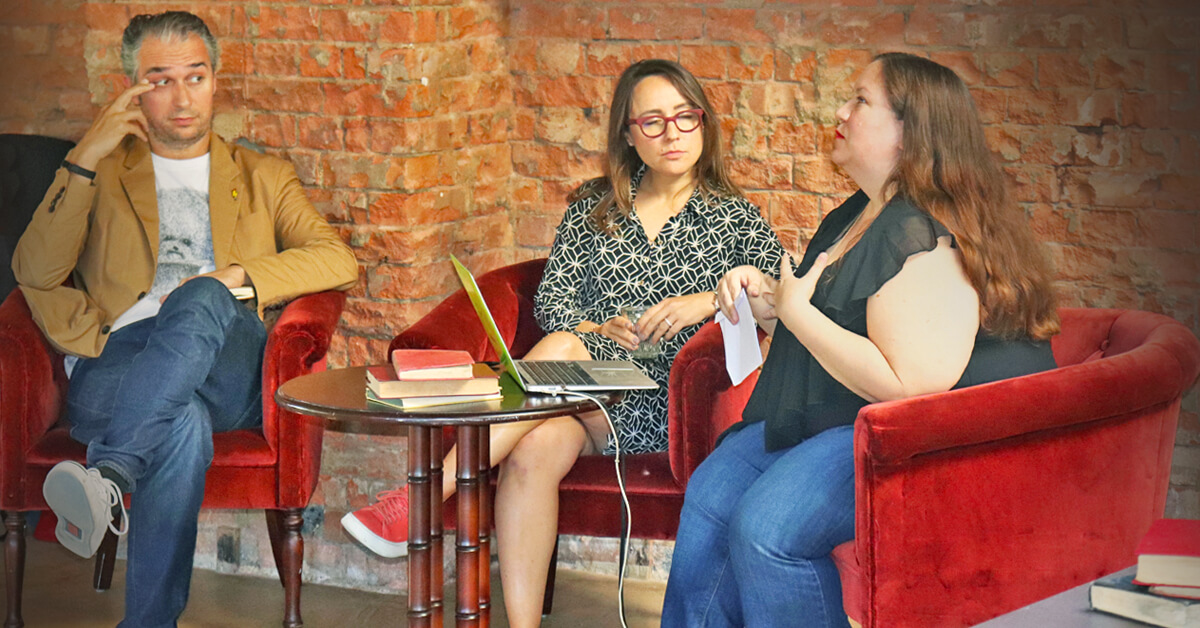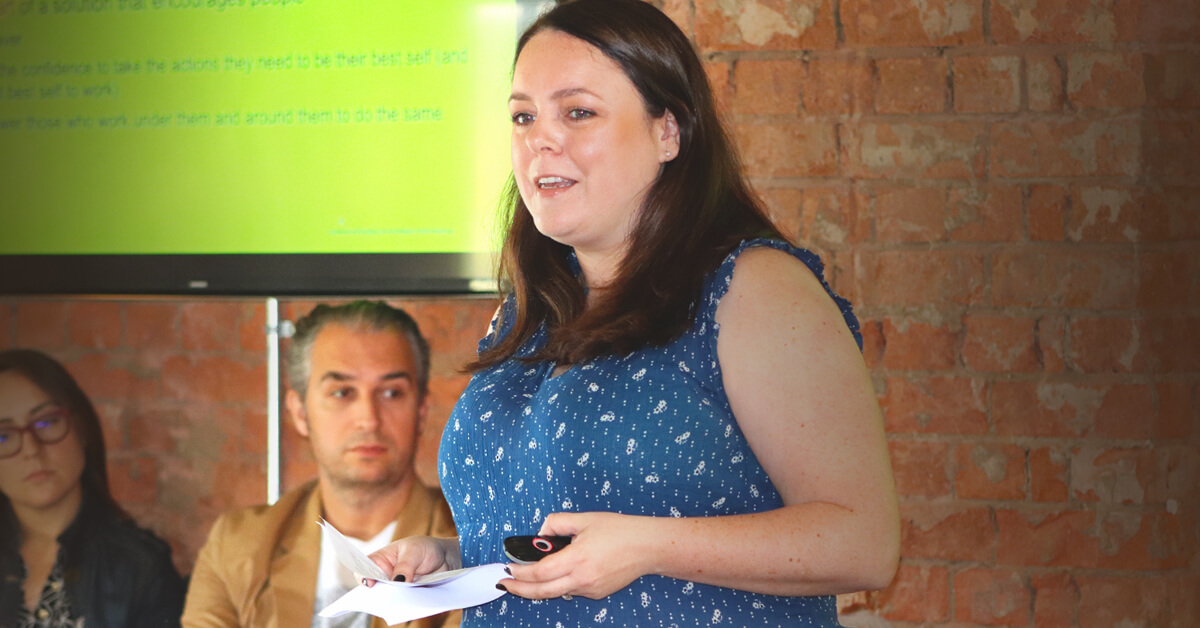On Thursday 27th September, we held the second event for GroundTruth’s “Changing Martech”, our initiative to help create a more inclusive, braver and supportive culture within our industry.
Taking a lead from our inaugural event in July, we focussed on the key theme of the role that men play in driving inclusive cultures, and the impact our own ‘unconscious bias’ may have on behaviours.
We challenged a group of senior industry executives to discuss these, and to uncover ways to “hack” an age old question: why are people struggling to move the needle on diversity and inclusion?
Silos create silos
The consensus of the group is that operating ONLY in silos doesn’t necessarily achieve systemic change. Whilst they play an important role in giving support and getting topics on the table, to achieve a real movement everyone needs to be involved. Or as Chloe Thompson from TheGenderBlog puts it “No minority group in history has made any real change without the support of the majority”.
The problem with non-inclusive approach to inclusivity is the danger that it merely created more silos, echo chamber debates that did nothing to bring in the true diversity needed for companies to thrive.
Daniele Fiandaca, co-founder of change organisation Utopia put it ‘there is a lot of activity to support women, but very little to pull men in’.
While diversity initiatives are becoming far more widely adopted by companies across the Martech sector, the group discussed whether groups were far too often positioned as being focussed purely at women.
As one attendee highlighted, her company had begun their diversity strategy by creating a network for women which, as she said, meant “automatically not giving express permission for men to be there, even if they are invited.”
Another brought up that when she discussed attending the Changing Martech event at her office, the response was immediately it was just for women and was therefore defensive. “It was ‘where are all the men’s events?’ Although I pointed out this [Changing Martech] was to help create a more supportive industry for EVERYONE, we must recognise it clearly came from a feeling of being marginalised.”
So the key question is, how do you get inclusivity on everyone’s agenda?
Taking responsibility
Responsibility was high on the agenda throughout the discussion – the need for both leaders and individuals to play their part in ensuring change was a process involving both men and women.
GroundTruth Head of UK James Davies was the first to hold his hands up. He highlighted the fact that, although the event was promoted as about ‘inclusivity’ rather than particularly being aimed purely at women, a disproportionate number of men invited didn’t RSVP or turn up at the event.
He pointed out that it was important for ALL company leaders to proactively ensure their diversity initiatives were fully inclusive.
“I personally can’t understand why people feel this alienation, but I was genuinely surprised at this turnout. In future it will be incumbent on me to pick up the phone to people to understand why they were reluctant to get involved,” he said.
Michelle Langelaan, Director of Marketing at VIOOH, summed it up by saying she, like other women, simply expected men in her company to understand the female perspective and how she felt when, for instance, she walked into a room as the only female.
She said: “I expect men to understand this, but they don’t. The onus is on us to help inform men to be able to make that change, because if we expect people to change we need to help them. We should be doing this together as a team or I don’t think we can expect change.”
However, there was also some discussion amongst the group whether it came more from a place of inclusivity not being on the agenda of the ‘In-Group’. When attendees were asked for their viewpoint on why people are struggling to move the needle on inclusivity, reasons that came back included ‘self-interest’, ‘if it doesn’t affect you, why would you care’ and ‘having to confront the things you’re doing wrong and your unconscious bias to be able to address them’. All excellent points, and all difficult subjects to address as it’s unlikely people will admit to these to tackle effectively.
Trying to solve inclusivity by doing one big project isn’t realistic. Fiandaca described hacking as always looking for a part that’s broken. If you can find some bigger problem, you end up with lots of smaller problems the bigger is made up of, and concentrating on those is more likely to drive systemic change.
Education and language = steps to a more inclusive culture
Fiandaca described the realisation one of his clients had reached; “We have been trying for years to train women to thrive in a man’s culture. What we need to do is train men to change their culture for the benefit of business, and of everyone”.
We have been trying for years to train women to thrive in a man’s culture. What we need to do is train men to change their culture for the benefit of business, and of everyone.
He referred to a previous female colleague of his who used questions as an educational tool to help his understanding. “Ignorance means you don’t know stuff. As a man, there is so much I don’t know. But rather than judge when I said stupid stuff about gender that she didn’t agree with, she asked a question to make me think differently. Education is where everyone can make a difference”.
Ruth Zohrer, Chief Product Officer, Mindshare, pointed to language as being one of the biggest barriers to the success.
“We need to recognise the power of moving the label out of some of these schemes. So let’s call them parenting schemes, rather than mothers’ initiatives, so that it doesn’t have to be male or female, or straight or gay for instance.”
Hidden bias of good people
Prior to the roundtable, guests were invited to complete ‘Project Implicit’ test set by Harvard University. Two guests, one of which may have been me (!!), opened up to their unconscious bias towards disability and having a stronger correlation for women and career, therefore potentially affecting business decision making and what steps she took to mitigate now that she was aware of her bias.
As Zohrer put it; “We all have blind spots, and good people have hidden bias. But the important thing to recognize is it is not being done with intent or malice”.
So if you start from a place of understanding this, you have a much more open conversation rather than one that could be construed as defensive. But again, responsibility should be placed back on the individual to become more self-aware of their bias to address properly – living in a blinkered world when it comes to inclusivity will no longer cut it in today’s environment.
Initiatives to represent the industry properly
The lack of true inclusivity in the Martech industry was also cited as one of the reasons why conference platforms remained dominated by men.
The issue is today widely recognised as a problem. Ruth Zohrer, along with Cadi Jones and Tom Jenen, is one of those taking concrete steps to address this. She is one of the founders of Women Present, an initiative to encourage and aid more women to join speaking platforms.
She pointed out that the benefits of delivering true diversity in industry events went far beyond the increased profile and achievement of the individuals speaking.
She said: “This plays such an important role in creating role models because you become what you see. If we normalise a diverse speaker pool, then you won’t feel as judged as a woman to speak. Role modelling is incredibly important, we owe it to the next generation to provide role models they can follow.”
Be authentic
All attendees agreed that authenticity was crucial for any company looking to implement effective inclusivity strategies, policies and processes that ensured the benefits ran throughout the company, to both men and women.
Employees today are far too savvy to be taken in corporate diversity box ticking. Instead inclusivity had to be fully integrated with companies’ entire business and marketing strategy, to become part of their DNA.
The aim of Changing Martech is to encourage the industry and the individuals within it take real steps to help drive the change needed to create a truly inclusive working culture.
GroundTruth’s James Davies summed up with a call to action:
We can all take practical steps to help this change…If we all go off and encourage our colleagues to do one or two of the things that we’ve discussed here today, we’ll probably affect 200 to 250 people between us.
“We can all take practical steps to help this change. We’ve talked a lot today about unconscious bias, and everyone here is influential in their organisation. If we all go off and encourage our colleagues to do one or two of the things that we’ve discussed here today, we’ll probably affect 200 to 250 people between us.”
Continual change
GroundTruth’s Changing Martech will run throughout 2018-2019, in an effort to help find solutions to the issues we identified and to inspire both individuals and the companies they work for to build a better industry for everyone.





